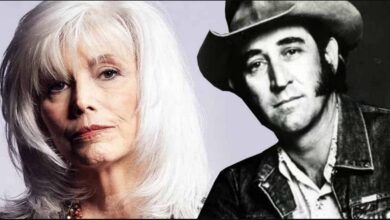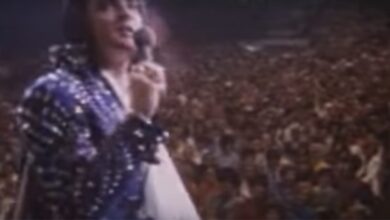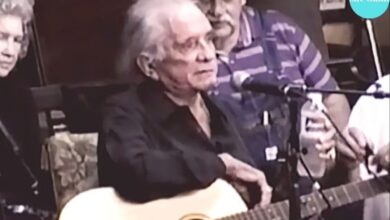Everyone Knew This Dance In The 1950s, Can You Still Recall It Today
In February 1958, American high school gyms and sock hops were enlivened by the emergence of “The Stroll,” a dance craze that captured the essence of the era’s burgeoning rock ‘n’ roll culture. This line dance quickly became a symbol of youthful exuberance and carefree spirit, thriving in the lively social scenes of the 1950s. Originating from African American communities, “The Stroll” gained widespread popularity through its exposure on television, particularly on Dick Clark’s “American Bandstand,” where teens across the country saw it and eagerly adopted it at their local events.
“The Stroll” was not just a dance but a cultural phenomenon that mirrored the social dynamics of its time. The dance involved two lines of participants facing each other, creating an aisle down the center.
Couples took turns strutting down this aisle in sync with the music, adding their unique style and personality to their movements. The dance’s structure allowed for both collective participation and individual expression, resonating with the youth of the era as they navigated their identities within a rapidly changing social landscape.
The soundtrack to this dance craze was “The Stroll,” a hit song performed by the Canadian vocal group The Diamonds. Known for their smooth doo-wop harmonies, The Diamonds played a crucial role in popularizing the dance. Their version of “The Stroll” became more than just a catchy tune; it was emblematic of the joy, rebellion, and communal spirit of the era. Dave Somerville, the group’s lead singer, with his rich baritone voice, became the voice of this movement, steering dancers with his engaging melodies.
The widespread appeal of “The Stroll” made it a fixture at dance events nationwide. Its universal charm transcended racial and social barriers at a time when the United States was deeply divided.
The dance’s simplicity and cool factor made it widely accessible, and teenagers embraced it with enthusiasm, donning their finest outfits and reveling in the opportunity to participate in the latest craze.
As “The Stroll” gained momentum, it became a defining feature of American teen culture, symbolizing the optimism and excitement of post-war America. The dance’s infectious rhythm and inclusive nature helped bridge gaps between different communities, bringing together diverse groups in a shared experience of fun and self-expression. The impact of “The Stroll” extended beyond its immediate popularity, leaving a lasting impression on the social fabric of the time and contributing to the rich tapestry of 1950s youth culture.





